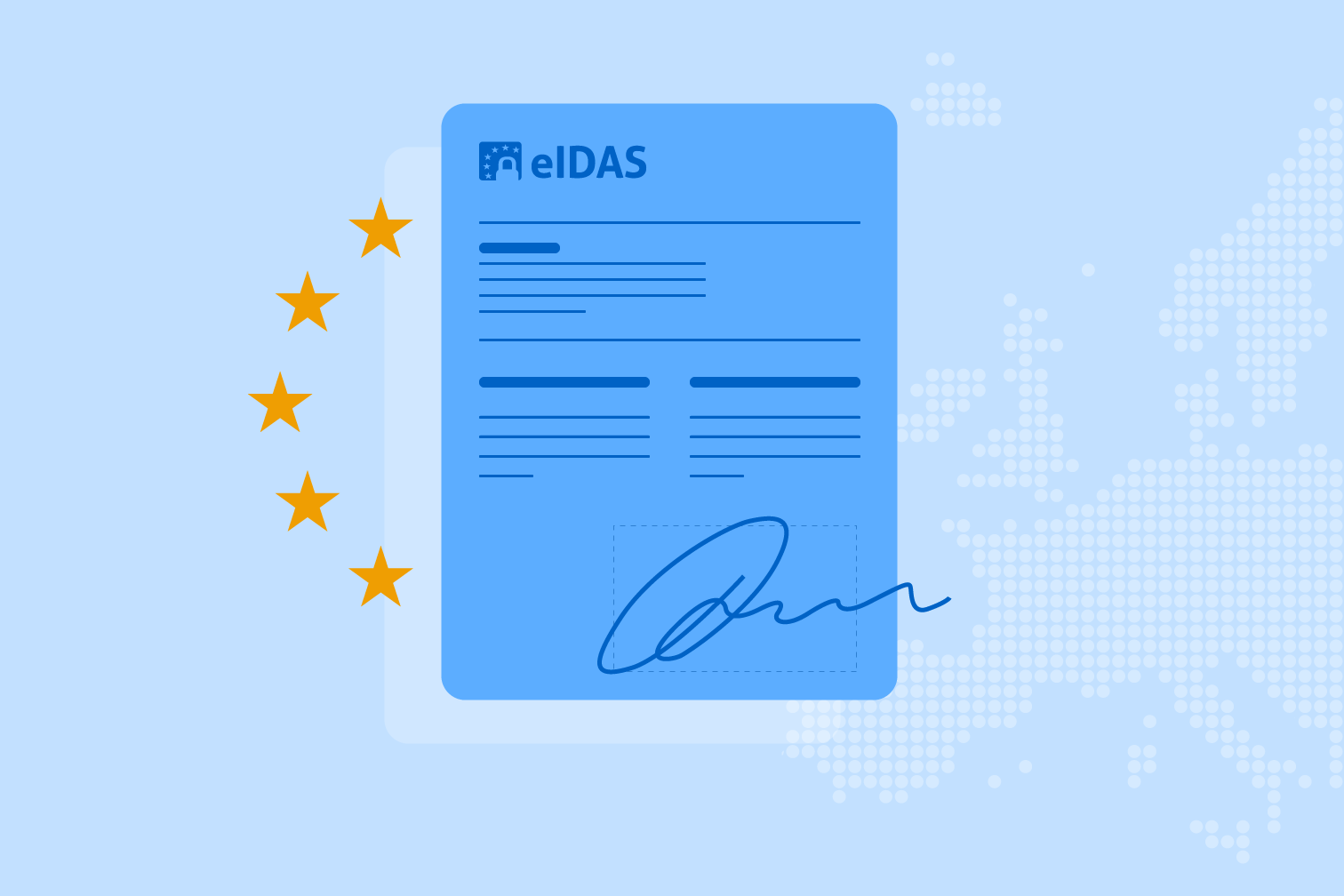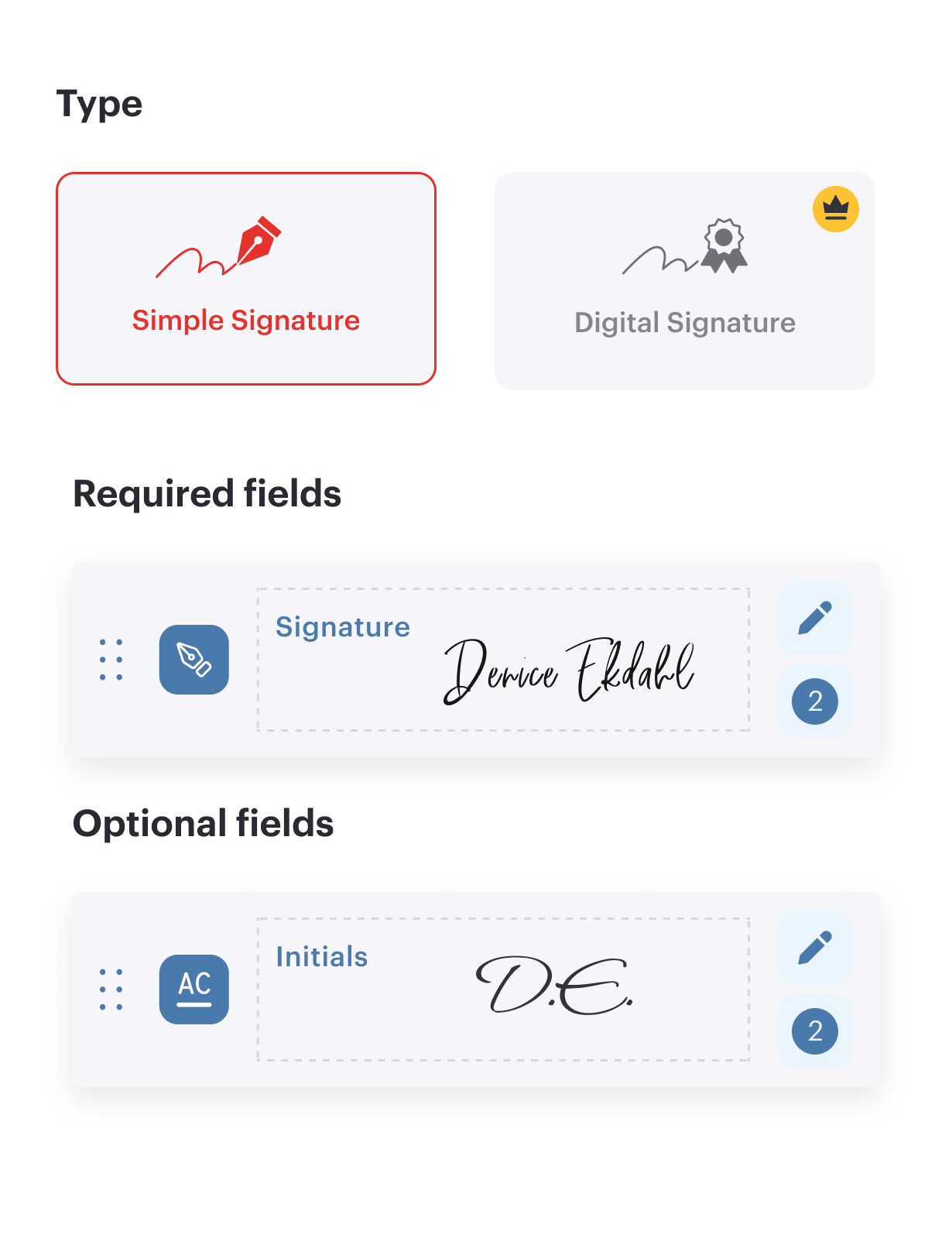Digital signatures and trust: Navigating the eIDAS Regulation
Find out more about the eIDAS Regulation and how to comply with it

The eIDAS Regulation guides the way to secure and seamless digital transactions no matter the European country they take place in. This blog post will explore the eIDAS Regulation and the role it plays in ensuring legally binding digital signatures.
Digital signatures serve as virtual fingerprints, authenticating the origin and integrity of electronic documents or transactions. The eIDAS Regulation not only validates the use of digital signatures but also sets forth guidelines to ensure their legal equivalence to traditional, handwritten signatures across borders.
What is eIDAS?
eIDAS, which stands for "Electronic Identification, Authentication, and Trust Services" is a set of regulations established by the European Union (EU) to standardize and regulate electronic and digital signatures and other electronic transactions.
This regulation aims to create a legal framework for electronic signatures across the EU member states, fostering cross-border trust and enabling secure and seamless digital interactions. eIDAS establishes three types of electronic signatures:
Simple Electronic Signatures (SES)
This is the basic form of electronic signature and can be as simple as typing your name into a document. While considered legally binding, SES may have limitations in certain high-assurance transactions.
Advanced Electronic Signatures (AES)
These signatures are uniquely linked to the signatory, capable of identifying the signer, ensuring the integrity of the signed data, and created using a device under the sole control of the signatory.
Qualified Electronic Signatures (QES)
QES is the highest level of electronic signature under eIDAS. It involves a digital signature based on a qualified certificate and is created by a secure signature-creation device.
How do you comply with the eIDAS Regulation?
To ensure compliance with eIDAS regulations when utilizing digital signature software, businesses must adhere to the following key guidelines:
Choose a Qualified Trust Service Provider (QTSP)
Use the services of a qualified trust service provider that adheres to eIDAS standards. A QTSP plays a crucial role in providing and verifying digital certificates, ensuring the trustworthiness of signatures.
Implement Advanced and Qualified Electronic Signatures
Depending on the sensitivity and legal implications of the document, opt for Advanced and Qualified Electronic Signatures.
Authenticate identity with the Audit Trail
Maintain a comprehensive audit trail of the signing process, including timestamps, signer identities, and any relevant authentication methods used. This documentation can be critical in proving the legality and authenticity of the electronic signature.
Is iLovePDF eIDAS compliant?
Yes, iLovePDF is eIDAS compliant. The features of the iLovePDF digital signature tool ensure that documents meet the strictest international security standards, including the eIDAS regulation, the ESIGN Act, and the UETA.
This compliance is attributed to the incorporation of both the SES (Simple Electronic Signatures) and the AES (Advanced Electronic Signatures) within Sign PDF. SES caters to standard electronic signatures, offering a secure method for everyday digital transactions. Meanwhile, the integration of AES takes the commitment a step further, providing a more sophisticated level of security and compliance.

What is a Qualified Trust Service Provider?
A Qualified Trust Service Provider (QTSP) specializes in electronic signatures, seals, and timestamps. They issue qualified certificates, signifying both security and legal equivalence to traditional processes.
By leveraging advanced cryptographic techniques, QTSPs contribute to the establishment of trust in digital transactions, providing businesses and individuals with a secure framework for their electronic communications and transactions.
Why choose digital signatures for your contracts and agreements?
Choosing a digital signature for your contracts and agreements brings many advantages, with ease of use standing out as a primary benefit. The streamlined process of signing documents digitally eliminates the need for physical presence or paper-based documentation, making it convenient for both parties involved.
Beyond ease of use, digital signatures enhance efficiency in business transactions. Documents can be signed promptly, reducing the time traditionally spent on manual processes. Document tracking, email reminders, and automatic conversion of documents to PDF/A enhance overall workflow and optimize long-term archiving, and are just some of the features that you can take advantage of.
Seguro em nossas mãos
- Seja qual for a ferramenta que você estiver utilizando, nós usamos encriptação ponto-a-ponto para garantir a máxima proteção contra roubo ou intercepção de seus documentos.
- Qualquer documento carregado em nosso sistema é automaticamente eliminado após duas horas, para previnir algum acesso não autorizado de terceiros.
- Todos nosso servidores estão seguros segundo as leis Europeias, das mais apertadas em todo o mundo.

